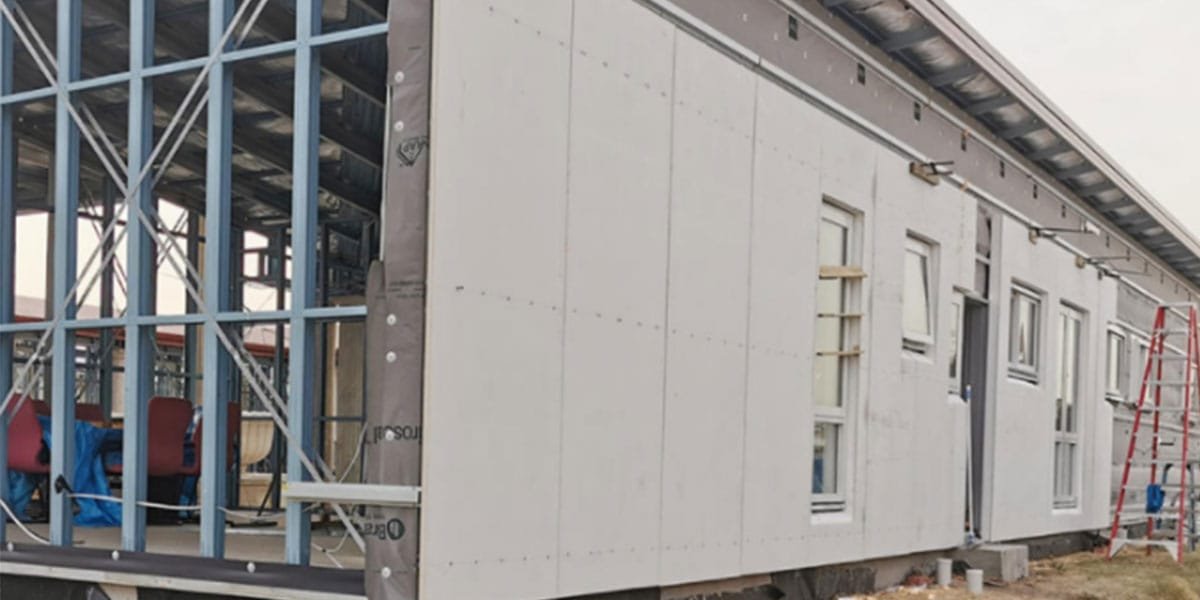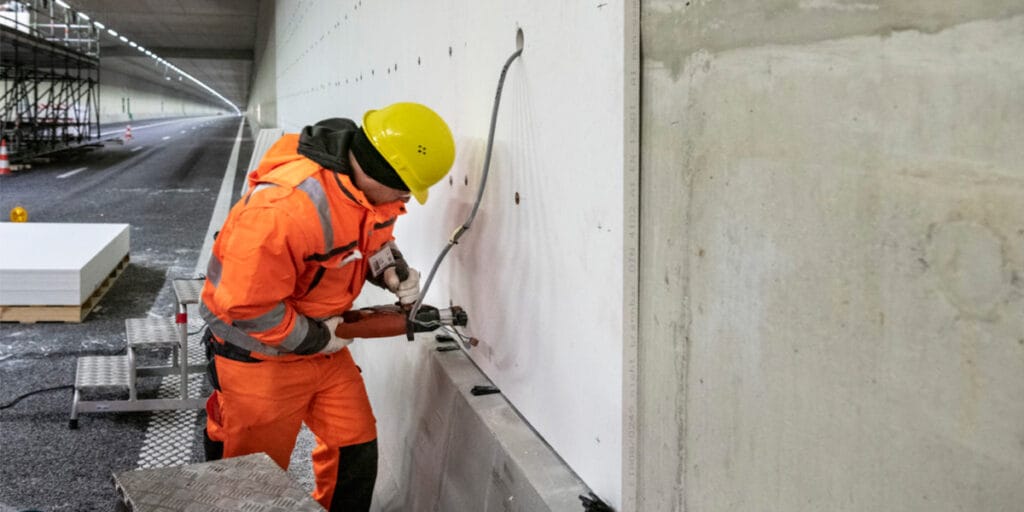
01 Apr Difference Between Magnesium Oxide Board and Calcium Silicate Board
Table of Contents
Looking for an affordable yet classic alternative to cement? The non-insulating board serves this purpose and is environmentally friendly. The variety of options puts your decision-making power to the test. Isn’t it? From my experience, I will share some valuable insights.
Magnesium Oxide board is a non-insulating glass fiber material with low density, making it strong yet lightweight. On the other hand, the Calcium Silicate board has shorter fibers, making it very strong. However, it’s heavy.
Besides that, MgO boards can protect you from loud sound as they have sound-absorbing material. These fire-resistant boards give an interior a grand look. I will compare every aspect of both boards so you can make an informed decision.
So, without further ado, let’s get into the topic.
Magnesium and Calcium Silicate Boards: What’s the Usage?
Before comparing magnesium and calcium silicate boards, we must know why we use them. These boards are mainly used to level up the aesthetic game of your home. You can use these boards in rooms as wallpapers and roof ceilings. This not only gives the interior of your home a grand look but also makes it more pleasant. The insulating and sound-resistant properties of these boards also make your rooms comfortable to sit in.
That’s pretty much of their usage. Let’s get straight into the comparison.

Difference Between MgO Board and Calcium Silicate Board
Let’s understand the attributes of both boards to make things easier. These are the top features of the MgO board and Calcium Silicate Board.
| Attributes | MgO Board | Calcium Silicate Board |
| Composition | Magnesium oxide (MgO), fiberglass | CaO3SiQuartz, fibers |
| Density | 0.85–1.2 g/cm3 | 2.92 g/cm3 |
| Strength | High compressive and flexural strength | Greater than 100Psi |
| Fire Resistant | Excellent Fire resistant | Good fire resistant |
| Cost | Expensive | Generally lower cost |
| Environmental Impact | Generally considered environmentally friendly | Eco-friendly |
| Flexibility | More rigid | More flexible |
| Moisture Resistant | Resistant to moisture | Resistant to moisture |
| Durability | High durability | Moderate durability |
| Appearance | Smooth | Textured |
Composition
The MgO board is made of magnesium oxide (MgO) and fibreglass. Meanwhile, the silicate board consists of calcium silicate (CaO3Si). The MgO board depends on magnesium compounds that add to its strengths and exceptional properties. Calcium silicate is made up of calcium and silicon compounds.
Density
Let’s recall the science! Density means how strongly the molecules are packed together. MgO’s density ranges from 0.85 to 1.2 g/cm3, making it lightweight. This is mainly because of the long fibres that make it less dense. Meanwhile, calcium silicate is denser and heavier, with a 2.92 g/cm3 density.
Strength
Both boards are strong. The MgO board is strong and can handle being bent or pressed without breaking. It’s formidable against forces that try to crush or bend it with flexural strength ranges between 15MPa to 22MPa.
Conversely, calcium silicate board is solid but flexible. It can withstand over 100 pounds of pressure per square inch without breaking.
Fire Resistance
Both MgO and Calcium Silicate boards offer good fire resistance, but MgO boards are often noted for their excellent fire resistance. Research shows that Magnesium Chloride ions in MgO boards are hygroscopic, which means they release water that helps cool down.
Calcium Silicate board is also a good fire-resistant but couldn’t match the level of the unique MgO board.
Cost
Well, let’s talk about the main thing – Cost. MgO board usually costs more than Calcium Silicate board. However, research shows that it’s considered a cost-effective option in the long term.
Calcium Silicate Board is often cheaper and works pretty well.
Environmental Impact
Both MgO and Calcium Silicate boards are considered suitable for the environment. The MgO board is recyclable and captures CO2 during the curing process. In addition, the manufacturing process of calcium silicate is cleaner. Calcium Silicate board is also considered eco-friendly, making it a good choice for builders.
Flexibility
Flexibility means how easily something can bend or change shape. MgO board is stiff, which means it’s strong and supports structures. But the Calcium Silicate board is different—it’s more flexible, so it can bend and fit into different shapes without breaking.
Moisture Resistance
Moisture resistance is essential in places like bathrooms and kitchens. Both boards are excellent at resisting moisture, which helps prevent damage or mould. So, these boards are great choices if you want any material to save your house from mould.
Durability
As the name implies, durability refers to how long something lasts and how well it can be used without damage. The MgO board is rigid and can withstand intense situations.
Calcium silicate is also strong, but it’s not that strong if we compare it with MgO.
Appearance
MgO board usually looks smooth, giving it a neat and tidy appearance.
However, the calcium silicate board is different—it often has a textured surface, which means some fancy details make it look more appealing.
That’s pretty much everything you need to know about the features of both of these boards. Still confused? Let’s find the key benefits and challenges to simplify decision-making.
Contact Sulfycor to Get Mgo Board Latest Quotation List.

Pros of MgO Board
Here are the key benefits that make Magnesium board our top pick.
- It can withstand extreme temperatures, I.e., it isn’t affected by temperatures of 750 degrees Centigrade, making it an excellent fire-resistant material.
- It doesn’t swell or delaminate when exposed to water
- It’s toxin-free (it doesn’t contain formaldehyde, silica, or fly ash), so suitable for sensitive individuals
- Durable and lightweight
- Not a preferred choice of termites to live
- Environmentally-friendly material
- Fungus resistant
- Recyclable material
- Easy to install
Cons of MgO Board
Although MgO boards pair well with every material, these boards have a few drawbacks. Let’s have a look at them:
- Free magnesium chloride in MgO boards is hygroscopic, making them a second option in humid environments.
- Cause frame corrosion
- High initial cost
Now that you know the key features of MgO board and Calcium silicate boards, take your time to make an informed decision. Make sure you consider the following points when choosing the board;
- Your locality
- Dimension of your place
- Cost
What Makes Sulfycor the Best MgO Board?
Looking for an all-in-one solution to get help installing MgO boards? Sulfycor is a well-known manufacturer of Chloride-free Magnesium Oxide boards. Based in China, has a massive workforce and advanced machinery to provide magnesium-related services.
The daily production capacity is 30,000 square meters. The material used in production meets ISO standards, making it safe to use. With over eight years of experience, Sulfycor offers wall sheathing, wallboard, and subflooring and has clientele in over 20 countries.
Let’s discuss your project and get your samples ready! The service is available 24/7, and you can contact us at Sulfycor anytime via social media handles and get instant responses. The door-to-door client service is the cherry on top.
Wrap Up
That’s everything you need to know about MgO boards and Calcium Silicate boards. Both have unique properties, but magnesium boards have won the war. The lightweight boards are cost-effective materials that give your interior an elegant look.
Magnesium boards’ fire- and insect-resistant properties make them stand out. Nevertheless, the products have a few drawbacks. But I’m sure we can make some arrangements to fix the issue.
